Fri, January 27, 2023
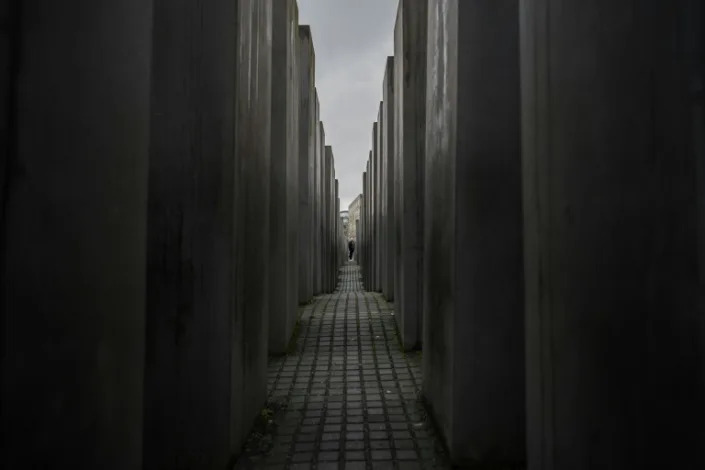
The UN secretary-general warned of social media's role in spreading violent extremism around the globe as he marked Holocaust Remembrance Day on Friday, urging policy makers to help stop online hate.
Antonio Guterres said parts of the internet were turning into "toxic waste dumps for hate and vicious lies" that were driving "extremism from the margins to the mainstream."
"Today, I am issuing an urgent appeal to everyone with influence across the information ecosystem," Guterres said at a commemoration ceremony at the United Nations. "Stop the hate. Set up guardrails. And enforce them."
He accused social media platforms and advertisers of profiting off the spread of hateful content.
"By using algorithms that amplify hate to keep users glued to their screens, social media platforms are complicit," added Guterres. "And so are the advertisers subsidizing this business model."
Guterres drew parallels with the rise of Nazism in 1930s Germany, when people didn't pay attention or protest.
"Today, we can hear echoes of those same siren songs to hate. From an economic crisis that is breeding discontent to populist demagogues using the crisis to seduce voters to runaway misinformation, paranoid conspiracy theories and unchecked hate speech."
He lamented the rise of anti-Semitism, which he said also reflects a rise of all kinds of hate.
"And what is true for anti-Semitism is true for other forms of hate. Racism. Anti-Muslim bigotry. Xenophobia. Homophobia. Misogyny"
Holocaust Memorial Day commemorated amid horrors of Russia-Ukraine war
Issued on: 27/01/2023 -
Auschwitz-Birkenau survivors and other mourners commemorated the 78th anniversary Friday of the Nazi German death camp's liberation, some expressing horror that war has again shattered peace in Europe and the lesson of Never Again is being forgotten.
The former concentration and extermination camp is located in the town of Oświęcim in southern Poland, which was under the occupation of German forces during World War II and became a place of systematic murder of Jews, Poles, Soviet prisoners of war, Roma and others targeted for elimination by Adolf Hitler and his henchmen.
In all, some 1.1 million people were killed at the vast complex before it was liberated by Soviet troops on Jan. 27, 1945.
Today the site, with its barracks and barbed wire and the ruins of gas chambers, stands as one of the world's most recognized symbols of evil and a site of pilgrimage for millions from around the world.
Jewish and Christian prayers for the dead were recited at the memorial site, which lies only 300 kilometers (185 miles) from Ukraine, where Russian aggression is creating unthinkable death and destruction — a conflict on the minds of many this year.
“Standing here today at this place of remembrance, Birkenau, I follow with horror the news from the east that the Russian army, which liberated us here, is waging a war there in Ukraine. Why? Why?" lamented survivor Zdzisława Włodarczyk during observances Friday.
Piotr Cywinski, Auschwitz state museum director, compared Nazi crimes to those the Russians have committed in Ukrainian towns like Bucha and Mariupol. He said they were inspired by a “similar sick megalomania" and that free people must not remain indifferent.
“Being silent means giving voice to the perpetrators,” Cywinski said. “Remaining indifferent is tantamount to condoning murder.”
Russian President Vladimir Putin attended observances marking the 60th anniversary of the camp’s liberation in 2005. This year, no Russian official at all was invited due to Russia’s attack on Ukraine.
Ukrainian President Volodymyr Zelenskyy marked the event in a social media post, alluding to his own country's situation.
“We know and remember that indifference kills along with hatred,” he said.
"Indifference and hatred are always capable of creating evil together only. That is why it is so important that everyone who values life should show determination when it comes to saving those whom hatred seeks to destroy.”
>> Hitler’s ‘war of annihilation’: Operation Barbarossa, 80 years on
An Israeli teacher, Yossi Michal, paying tribute to the victims with a teachers union delegation, said it was important to remember the past, and while he said what is happening in Ukraine is terrible, he felt each case is unique and they shouldn't be compared.
Italian Premier Giorgia Meloni, whose Brothers of Italy party has its roots in the post-Word War II neo-fascist Italian Social Movement, called the Holocaust “the abyss of humanity. An evil that touched also our country with the infamy of the racial laws of 1938.”
Bogdan Bartnikowski, a Pole who was 12 years old when he was transported to Auschwitz, said the first images he saw on television last February of refugees fleeing Russia's full-scale invasion of Ukraine triggered traumatic memories.
He was stunned seeing a little girl in a large crowd of refugees holding her mother with one hand and grasping a teddy bear in the other.
“It was literally a blow to the head for me because I suddenly saw, after almost 80 years, what I had seen in a freight car when I was being transported to Auschwitz. A little girl was sitting next to me, hugging a doll to her chest," Bartnikowski, now 91, said.
Bartnikowski was among several survivors of Auschwitz who spoke about their experiences to journalists Thursday.
Another, Stefania Wernik, who was born at Auschwitz in November 1944, less than three months before its liberation, spoke of Auschwitz being a “hell on earth.”
She said when she was born she was so tiny that the Nazis tattooed her number — 89136 — on her thigh. She was washed in cold water, wrapped in rags and subjected to medical experiments.
And yet her mother had abundant milk, and they both survived. After the war, her mother returned home and reunited with her husband, and “the whole village came to look at us and said it's a miracle.”
She appealed for “no more fascism, which brings death, genocide, crimes, slaughter and loss of human dignity.”
French Resistance
The Germans established Auschwitz in 1940 for Polish prisoners; later they expanded the complex, building death chambers and crematoria where Jews from across Europe were brought by train to be murdered.
German Chancellor Olaf Scholz said “the suffering of 6 million innocently murdered Jews remains unforgotten — as does the suffering of the survivors.”
“We recall our historic responsibility on Holocaust Memorial Day so that our Never Again endures in future,” he wrote on Twitter.
The German parliament was holding a memorial event focused this year on those who were persecuted for their sexual orientation. Thousands of gay, lesbian, bisexual and transsexual people were incarcerated and killed by the Nazis. Their fate was only publicly recognized decades after the end of World War II.
Elsewhere in the world on Friday events were planned to mark International Holocaust Remembrance Day, an annual commemoration established by a United Nations resolution in 2005.
In Britain, candles were lit to remember victims of genocide in homes and public buildings, including Buckingham Palace.
UK man who saved children from horrors of concentration camps
(AP)
Survivors of Auschwitz-Birkenau gather to commemorate liberation 78th anniversary
New technology allows Holocaust survivors to tell their stories for all time
The technology is providing a way for future generations to interact with a hologram-style likenesses of Holocaust survivors.
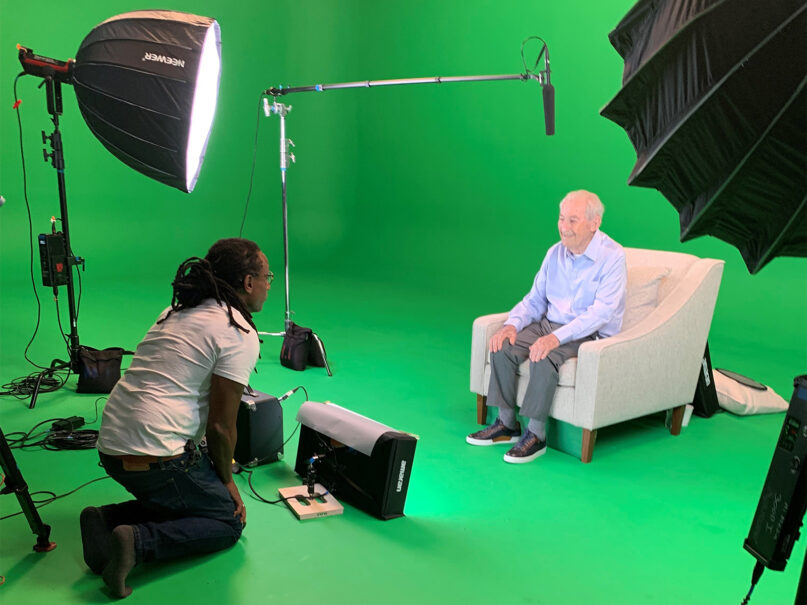
Holocaust survivor David Schaecter, right, sits for a Dimensions in Testimonies recording of his life story in January 2023. Photo courtesy of Jody Kipnis
(RNS) — David Schaecter is 93 and he is running out of time.
He has dedicated the past 60 years to recounting his struggle for survival in Auschwitz, his escape and how he pieced his life together in the United States after losing his entire family in the Holocaust.
As he marks International Holocaust Remembrance Day on Friday (Jan. 27), Schaecter knows his days of travel and in-person testimony-giving will soon end.
So this week he agreed to a weeklong recording of his life story using a new technology that will allow future generations to interact with a hologram-style likeness of him.
That story will form the base of an exhibit at Boston’s future Holocaust museum, which is scheduled to open in 2025.
“All children, but especially Jewish children, need to know who they are, what they are and what happened,” said Schaecter on a lunch break during the filming in a Miami studio. “I’m the guy who would like to tell them what happened.”
The technology, produced by the USC Shoah Foundation’s Dimensions in Testimonies project, records Holocaust survivors’ answers to about 1,000 questions on individual video clips. Later, using natural-language technology, programmers transform each answer into a search term. In a museum or classroom setting, people can pose a question to a two-dimensional life-size image of the survivor and see and hear the survivor’s answer in real time.
Schaecter is the 62nd Holocaust survivor to undergo the marathon taping for the interactive display. As the number of survivors who can share their stories dwindles, the technology is providing a way for museums and schools to keep the memory of the murder of 6 million Jews by the Nazis and their allies from being forgotten.
Jody Kipnis, the co-founder of a Boston Holocaust museum, said she and her partner Todd Ruderman first experienced the hologram-style technology at the Illinois Holocaust Museum and Education Center in Skokie.
“We knew we wanted that exhibit and we knew we wanted David,” she said. “This is as close to speaking to a Holocaust survivor as (one) can get after the survivors are gone.”
Since the technology first became available 10 years ago, 14 Holocaust museums (including 11 in the United States) have featured exhibits with survivors using the interactive technology.
RELATED: 16 objects from Germany tell story of Holocaust in new ways
Schaecter is an old pro at telling his story. He was among the founders of the Holocaust Memorial Miami Beach and has devoted countless hours meeting with grade school, high school and university students to tell them about his life.
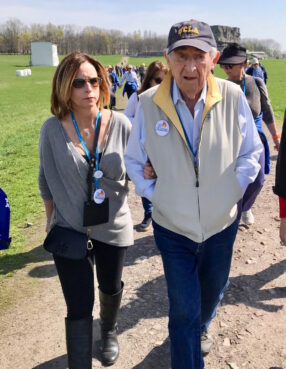
Jody Kipnis, left, with Holocaust survivor David Schaecter. Photo courtesy of Jody Kipnis
When Schaecter was 11, he was taken with his mother, two younger sisters and an older brother from his home in what was Czechoslovakia to the Auschwitz camp in Poland. Upon arrival, he was separated from his mother and sisters and never saw them again. He and his brother spent 18 months in Auschwitz and were transported to the Buchenwald concentration camp near Weimar, Germany, where he spent another two years and where his brother was killed. Schaecter escaped from a train as the Germans were clearing out the camps. He arrived in the United States in 1950 and earned a degree in industrial engineering from the University of California Los Angeles.
In 2018, Kipnis and Ruderman accompanied Schaecter on a trip back to Auschwitz. When they returned, the couple started the Holocaust Legacy Foundation. Last year, they purchased a building along Boston’s historic freedom trail where they plan to create a 30,000-square-foot museum.
Schaecter’s testimony will be the centerpiece but it will include other interactive experiences.
“David inspired us to build this museum,” Kipnis said. “We stood in front of his bunker no. 8, and he said to us: ‘Hear me, listen to me, be my voicepiece and tell my story.’”
For Schaecter, who lost so much, the new technology is a chance to give testimony on behalf of the estimated 1.5 million children under 12 who lost their lives in the Holocaust and will never have a chance to speak.
“Those 1.5 million neshamot,” he said, using the Hebrew plural for “souls,” “need to be remembered.”
RELATED: Teaching teachers about the Holocaust and its lessons for democracy today
Issued on: 27/01/2023 -
Survivors of Auschwitz-Birkenau are gathering Friday to commemorate the 78th anniversary of the liberation of the Nazi German death camp in the final months of World War II, amid the horror of war again shattering peace in Europe. As the world marks the Auschwitz anniversary, with a brutal war raging in Ukraine, FRANCE 24 is joined by Pierre-François Veil, Lawyer and Vice President of the Foundation for the Memory of the Shoah.
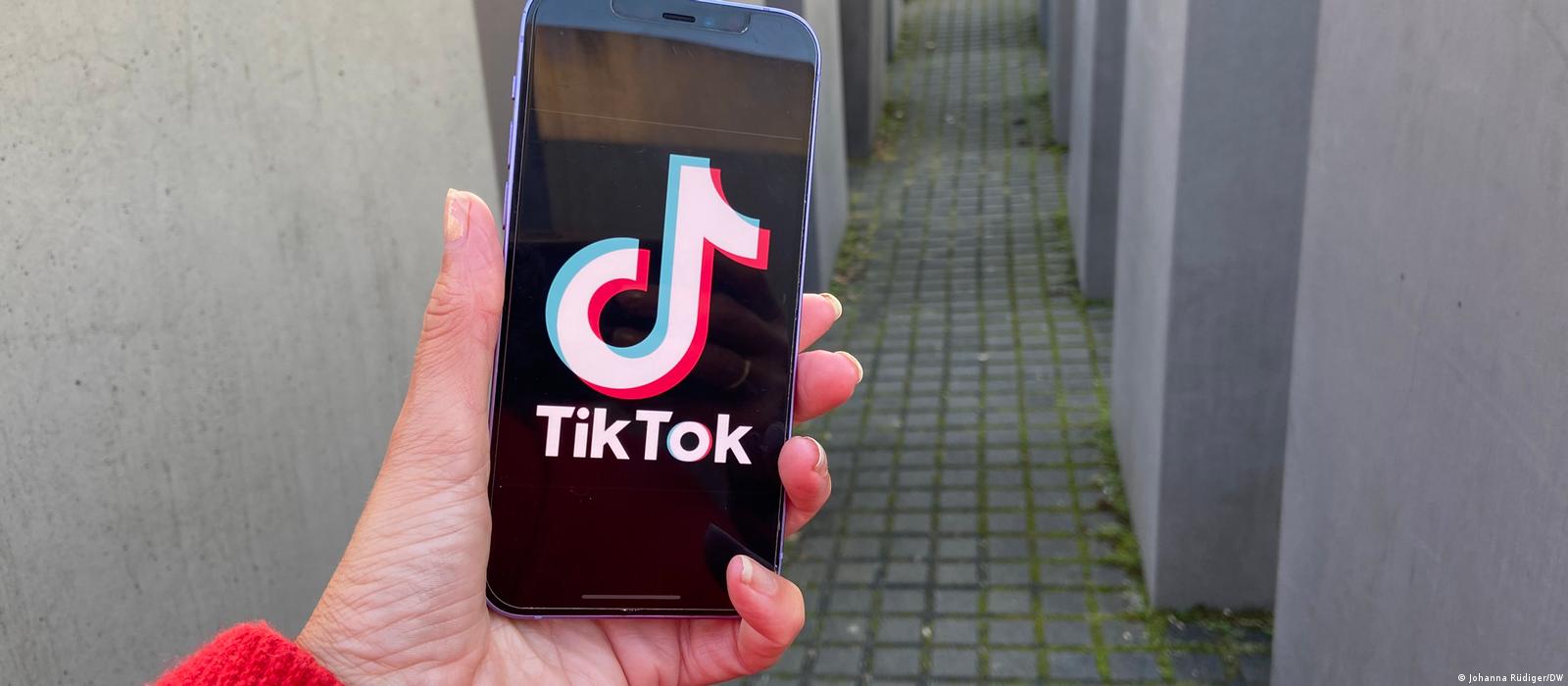
Holocaust remembrance on TikTok
Johanna Rüdiger
January 26, 2023
Holocaust survivors and concentration camp memorial sites are taking to the video-based social media platform to raise awareness among young users.
A 15-year-old girl with hollow cheeks looks mournfully into the camera, her video accompanied by a song by R&B singer Bruno Mars. A video caption explains that she is about to be deported to a concentration camp.
Next, a young man in a striped uniform appears to stage his supposed arrival in heaven. He says he was murdered in a gas chamber in the Auschwitz concentration camp.
Back in August 2020, these reenactments of Holocaust victim stories onTikTok sparked a major controversy: a hashtag challenge led users in Generation Z (aged 14 to 24) to pretend to be Holocaust victims who had perished in concentration camps.
The Auschwitz memorial responded to the trend, calling it "hurtful and offensive."
One of the young TikTokers defended herself in an interview, saying she had been trying to educate people and raise awareness about the Holocaust.
But at the time, many agreed that a platform famous for its viral dance videos was not appropriate for short clips about the Holocaust, even if they were intended to raise awareness.
TikTok can be different
Two years later, also in August, it's a rare hot summer day in northern Germany. But instead of spending the day at the beach, 21-year-old David Gutzeit and his younger sister, Jonna, leave their home on the Baltic Sea coast to drive to the former Neuengamme concentration camp in Hamburg.
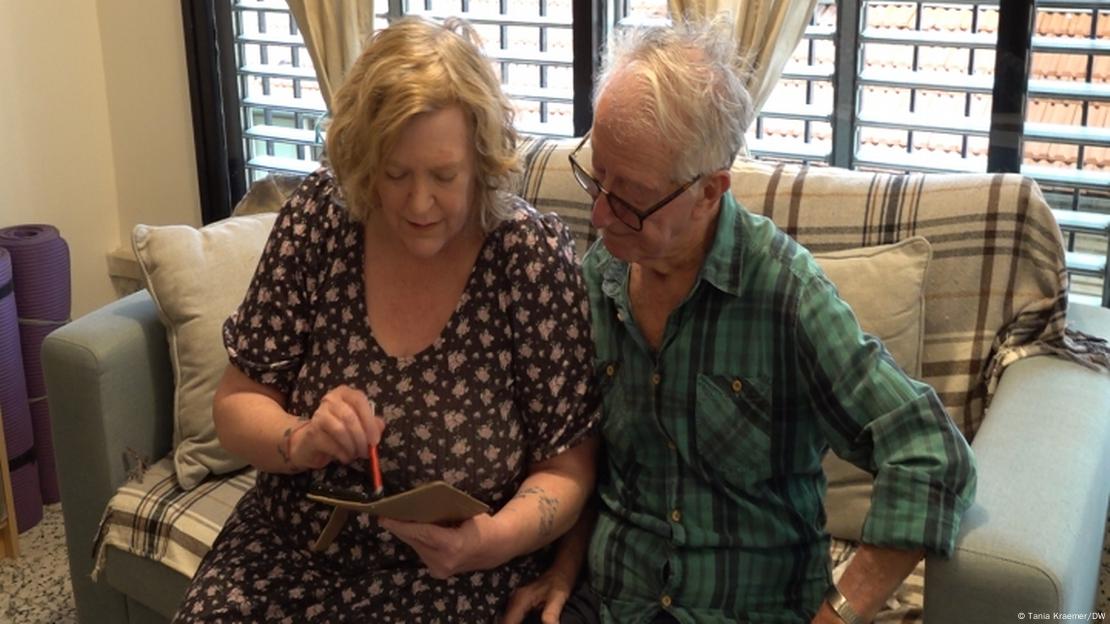
In the glaring sun, they contemplate a memorial of carefully piled stones, the symbolic remains of the prison barracks in which thousands of concentration camp inmates were crammed together.
The Neuengamme memorial commemorates the more than 100,000 people from all over Europe who were imprisoned in the main camp and its more than 85 satellite camps during the Nazi era.
Half of these people did not survive the concentration camp.
A new approach to Holocaust remembrance on TikTok
"Many young people come here because they saw us on TikTok," said Iris Groschek, the historian responsible for the TikTok channel at the Neuengamme memorial — the first channel of its kind when it was founded in November 2021.
TikTok has become an important way for the memorial center to reach young people who are no longer on Facebook and other older social media platforms, said Groschek.
"It's not enough for me just to read about it in school books, I want to see and feel where these Nazi atrocities happened," said David, visibly moved.
Nicolas, a 17-year-old from Madrid, said he was the one who convinced his parents to stop in Neuengamme during their sightseeing trip in Germany.
Starlett from Kansas and Hannah from Hawaii are also at the site to learn about the history of the concentration camp.
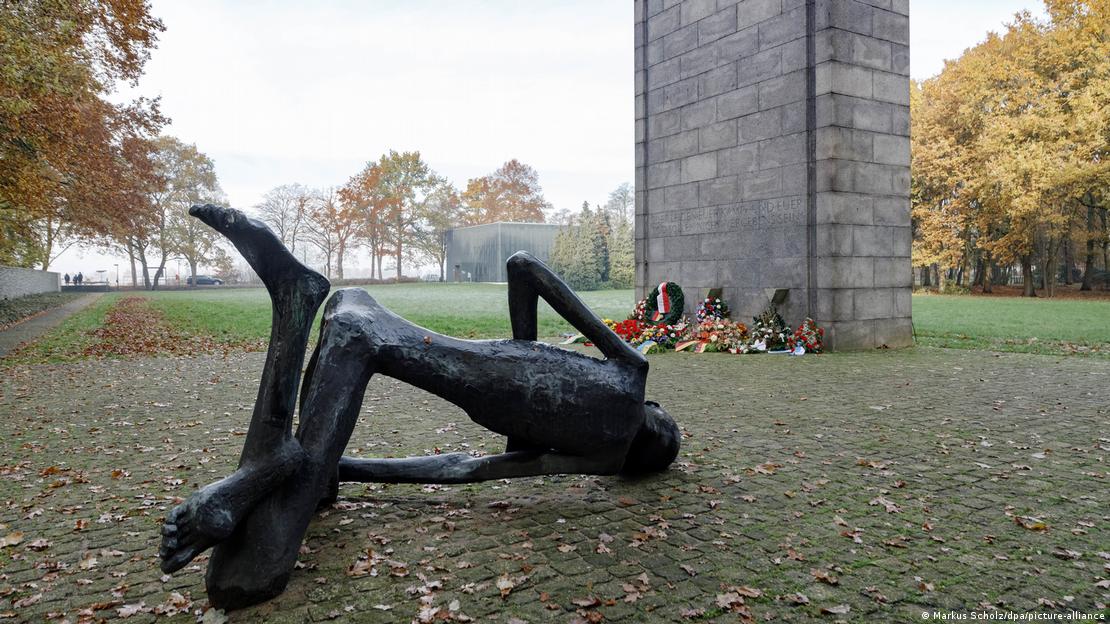
Studies show that Generation Z— people born between 1995 and 2010 — know little about concentration camps, yet are much more interested in the Nazi era than their parents' generation.
"We want to create visibility for the topic among the young target group and reach Gen-Z users on TikTok," explained Groschek. "We would otherwise hardly be able to reach them with our educational work on other platforms."
The account now has 27,000 followers. Some of its videos go viral and have millions of views.
Volunteers contribute as content creators
The video creators are young volunteers from all over the world who work at the memorial as part of their time spent working with the organization Action Reconciliation Service for Peace.
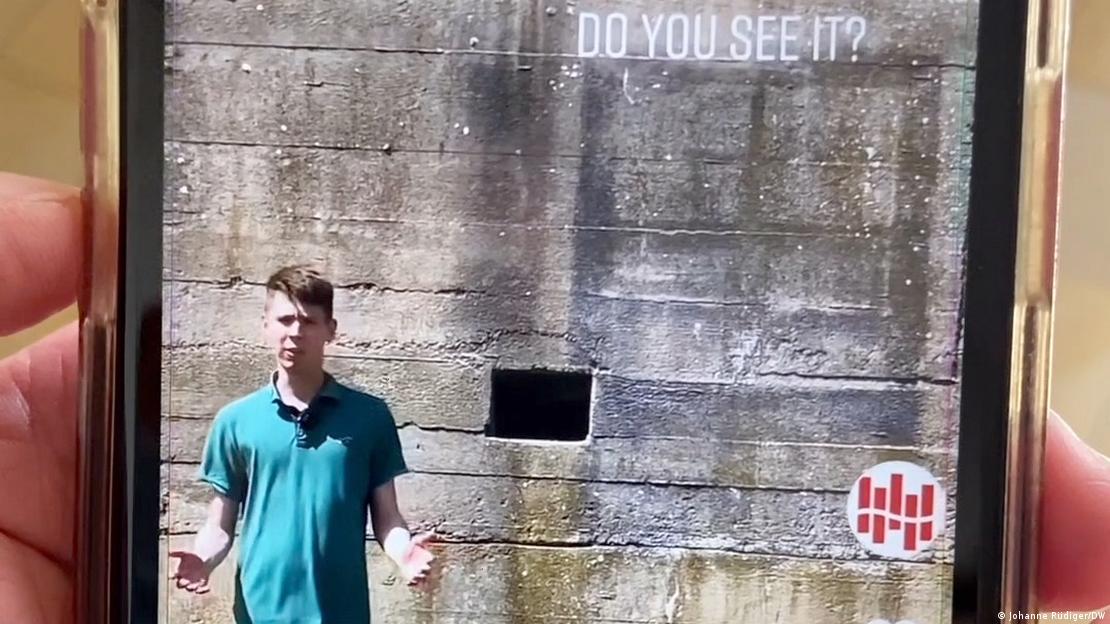
"We're very careful that our videos don't overwhelm users emotionally. We want the community to learn something," said Groschek, adding that they don't reenact victims' stories or concentration camp scenes, as is otherwise often seen on TikTok.
The memorial center's pioneering work has also inspired others.
Neuengamme is no longer alone on TikTok; other concentration camp memorials, such as Bergen-Belsen in Germany and Mauthausen in Austria, have since created their own accounts.
Numbers clearly demonstrate the outreach potential, said Marlene Wöckinger, TikTok creator for the Mauthausen memorial. Around 200,000 people visit Mauthausen every year, whereas a single TikTok video can have the same reach.
Holocaust eyewitnesses share their stories on TikTok
Some Holocaust survivors have already used the platform, including Lily Ebert, who together with her great-grandson has 1.9 million followers.
The 99-year-old even follows dance trends while using the platform to tell her survival story.
TikTok star, 97, shares Auschwitz experience 03:08
Gidon Lev, who survived the Theresienstadt concentration camp, is also on TikTok.
For International Holocaust Remembrance Day on January 27, the 88-year-old produced a video in cooperation with the Neuengamme memorial center. The video is part of a series with different Holocaust memorials that he publishes on his TikTok channel.
"To my great consternation, in these last few years, hate, violence, antisemitism and more have resurged," said Lev.
The Holocaust survivor wants to increase awareness among younger generations, warning them against "this ugly, destructive phenomena, in any and every way possible."
"We must tell the truth, warn of the dangers and fight back! Don't give in, don't give up, don't forget!"
The social media platform itself has recognized the popularity of the theme: TikTok now automatically links every video about the Holocaust to aboutholocaust.org, an educational website created by the World Jewish Congress and UNESCO.
TikTok has also started its own "Shoah Education and Commemoration Initiative," which has since been awarded the Shimon Peres Prize. Accordingly, TikTok supports 15 memorial centers — such as Neuengamme or Mauthausen — by offering workshops and exchanges in cooperation with the Hebrew University of Jerusalem.
"We must prevent the Holocaust from being degraded to just another chapter in a textbook," said Yaki Lopez, head of public relations at the Israeli Embassy in Berlin. "That is why it is important to adapt the commemoration of the Holocaust and the transmission of knowledge to the realities of the lives of the younger generation."
TikTok's Shoah initiative also makes an important contribution in this regard, he added.
The DW TikTok account Berlin Fresh also produced an educational series in cooperation with the Neuengamme memorial.
Guidelines for visitors to former concentration camps
A look at the DW Berlin Fresh user data shows that interest in the subject is very high: More than 9 million views were generated by one of the 30-second explainer video in the DW series, and viewers were mainly under the age of 24.
In "3 things you shouldn't do at a former concentration camp," TikToker Daniel Cartwright, who is an Action Reconciliation Service for Peace volunteer from the UK at the Neuengamme memorial, explains from his personal perspective how one should behave when visiting such a site.
How does the 23-year-old feel about addressing Nazi atrocities in videos every day?
"Sometimes the horrors of the place do get to me," said Cartwright in the DW series. "But then I hear that young people come here to the memorial because of our TikToks and want to learn more — and then I realize how important our work is."
For more videos related to Holocaust education and German culture, visit our TikTok channel DW Berlin fresh.
This article was originally written in German.

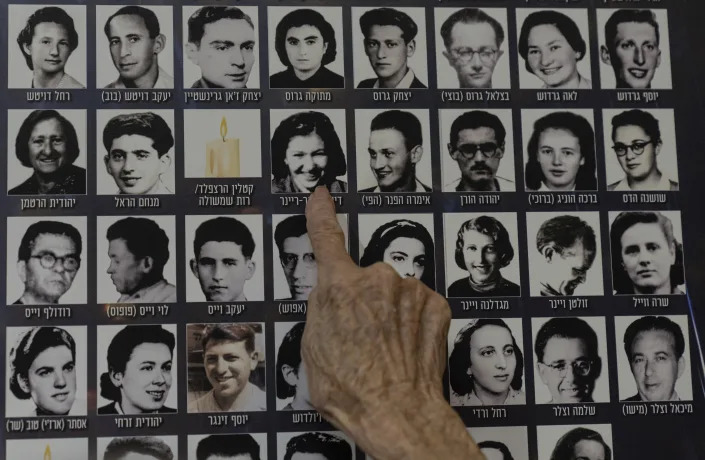
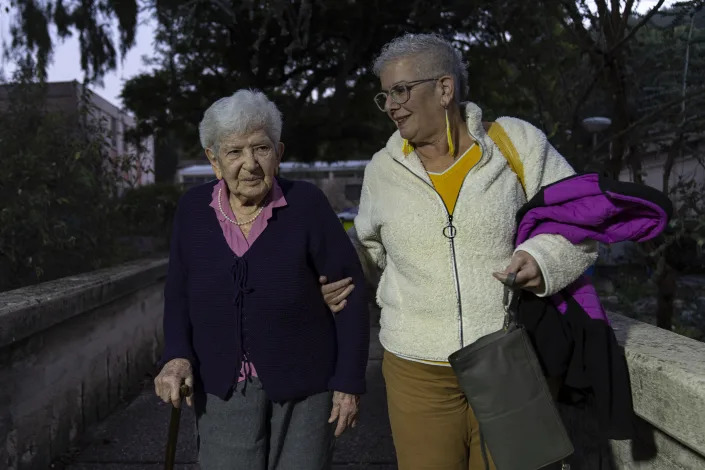
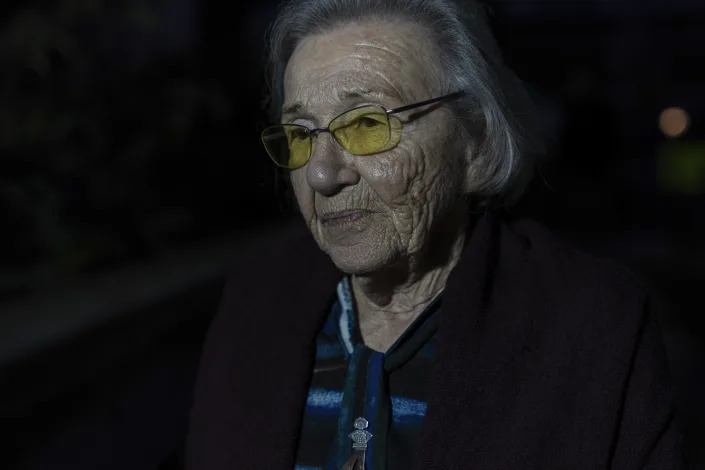

Holocaust survivor Bezalel Gross receives the Jewish Rescuers Citation for his role as a member of the Zionist youth movement underground in Hungary during the Holocaust, at Kibbutz HaZorea, northern Israel, Tuesday, Dec. 13, 2022. Just before Nazi Germany invaded Hungary in March 1944, Jewish youth leaders in the eastern European country jumped into action: they formed an underground network that in the coming months would rescue tens of thousands of fellow Jews from the gas chambers.
ALON BERNSTEIN
Thu, January 26, 2023
KIBBUTZ HAZOREA, Israel (AP) — Just before Nazi Germany invaded Hungary in March 1944, Jewish youth leaders in the eastern European country jumped into action: They formed an underground network that in the coming months would save tens of thousands of fellow Jews from the gas chambers.
This chapter of the Holocaust heroism is scarcely remembered in Israel. Nor is it part of the official curriculum in schools. But the few remaining members of Hungary’s Jewish underground want their story told. Dismayed at the prospect of being forgotten, they are determined to keep memories of their mission alive.
“The story of the struggle to save tens of thousands needs to be a part of the chronicles of the people of Israel,” said David Gur, 97, one of a handful of members still alive. “It is a lighthouse during the period of the Holocaust, a lesson and exemplar for the generations.”
As the world marks International Holocaust Remembrance Day on Friday, historians, activists, survivors and their families are all preparing for the time when there will no longer be living witnesses to share first-person accounts of the horrors of the Nazi genocide during World War II. In the Holocaust, 6 million Jews were wiped out by the Nazis and their allies.
Israel, which was established as a refuge for Jews in the wake of the Holocaust, has gone to great lengths over the years to recognize thousands of “Righteous Among the Nations” — non-Jews who risked their lives to save Jews during the Holocaust.
Accounts of Jewish resistance to the Nazis, such as the Warsaw Ghetto uprising, are mainstays in the national narrative but rescue missions by fellow Jews — such as the Hungarian resistance — are less known.
Hungary was home to around 900,000 Jews before the Nazi invasion. Its government was allied with Nazi Germany, but as the Soviet Red Army advanced toward Hungary, the Nazis invaded in March 1944, to prevent its Axis ally from making a separate peace deal with the Allies.
Over the 10 months that followed, as many as 568,000 Jews were killed by the Nazis and their allies in Hungary, according to figures from Yad Vashem, Israel’s official Holocaust memorial.
Gur said he and his colleagues knew that disaster was looming when three Jewish women arrived at Budapest’s main synagogue in the fall of 1943. They had fled Nazi-occupied Poland and bore disturbing news about people being shipped off to concentration camps.
“They had fairly clear information about what was happening, and saw the many trains, and it was obvious to them what was happening,” said Gur.
Gur oversaw a massive forgery operation that provided false documents for Jews and non-Jewish members of the Hungarian resistance. “I was an 18-year-old adolescent when the heavy responsibility fell upon me,” he said.
There was great personal risk. In December 1944, he was arrested at the forgery workshop and brutally interrogated and imprisoned, according to his memoir, “Brothers for Resistance and Rescue.” The Jewish underground broke him out of the central military prison in a rescue operation later that month.
The forged papers were used by Jewish youth movements to operate a smuggling network and run Red Cross houses that saved thousands from the Nazis and their allies.
According to Gur's book, at least 7,000 Jews were smuggled out of Hungary, through Romania to ships on the Black Sea that would bring them to British-controlled Palestine. At least 10,000 forged passes offering protection, known as Shutzpasses, were distributed to Budapest’s Jews, and around 6,000 Jewish children and accompanying adults were saved in houses ostensibly under the protection of the International Red Cross.
Robert Rozett, a senior historian at Yad Vashem, said that although it was “the largest rescue operation” of European Jews during the Holocaust, this episode remains off “the main route of the narrative.”
“It’s very significant because these activities helped tens of thousands of Jews stay alive in Budapest,” he said.
In 1984, Gur founded “The Society for Research of the History of the Zionist Youth Movements in Hungary,” a group that has promoted awareness about this effort.
Last month at a kibbutz in northern Israel, Sara Epstein, 97, Dezi Heffner-Reiner, 95, and Betzalel Grosz, 98, three of the remaining survivors who helped save Jews in Nazi-occupied Hungary, received the Jewish Rescuers Citation for their role in the Holocaust. The award is given by two Jewish groups — B’nai B’rith World Center-Jerusalem and the Committee to Recognize the Heroism of Jewish Rescuers During the Holocaust.
“There aren’t many of us left, but this is important,” said Heffner-Reiner.
More than 200 other members of the underground were given the award posthumously. Gur received the award in 2011, the year it was created.
Yuval Alpan, a son of one of the rescuers and an activist with the society, said the citations were meant to recognize those who saved lives during the Holocaust.
“This resistance underground youth movement saved tens of thousands of Jews during 1944, and their story is not known,” he said. “It’s the biggest rescue operation in the Holocaust and nobody knows about it.”
International Holocaust day falls on the anniversary of the Red Army's liberation of the Auschwitz death camp 78 years ago. Israel is home to some 150,600 Holocaust survivors, almost all of them over the age of 80, according to government figures. That is 15,193 less than a year ago.
The United Nations will be holding a memorial ceremony at the General Assembly on Friday, and other memorial events are scheduled around the globe.
Israel marks its own Holocaust Remembrance Day in the spring.
___
Associated Press writers Eleanor Reich and Ilan Ben Zion in Jerusalem contributed to this report.
No comments:
Post a Comment